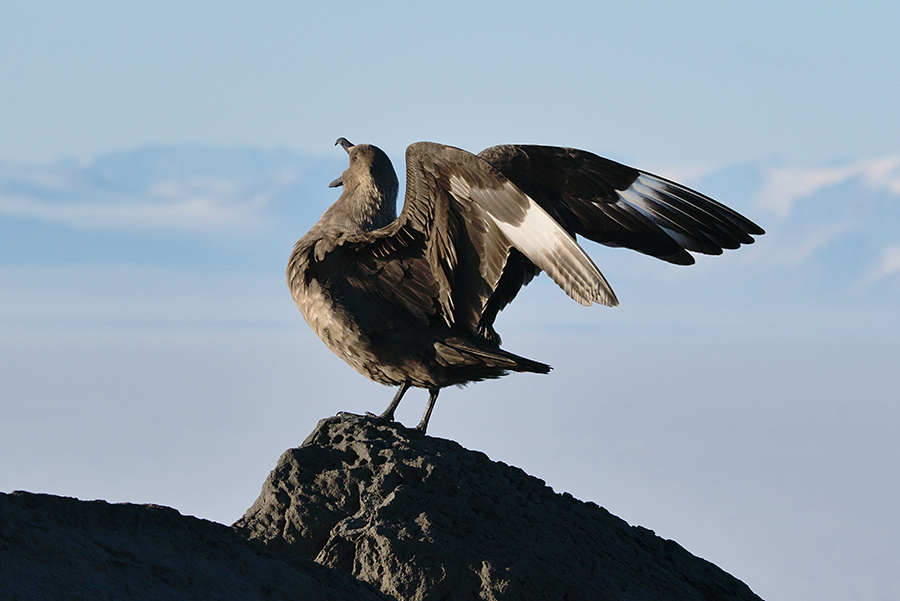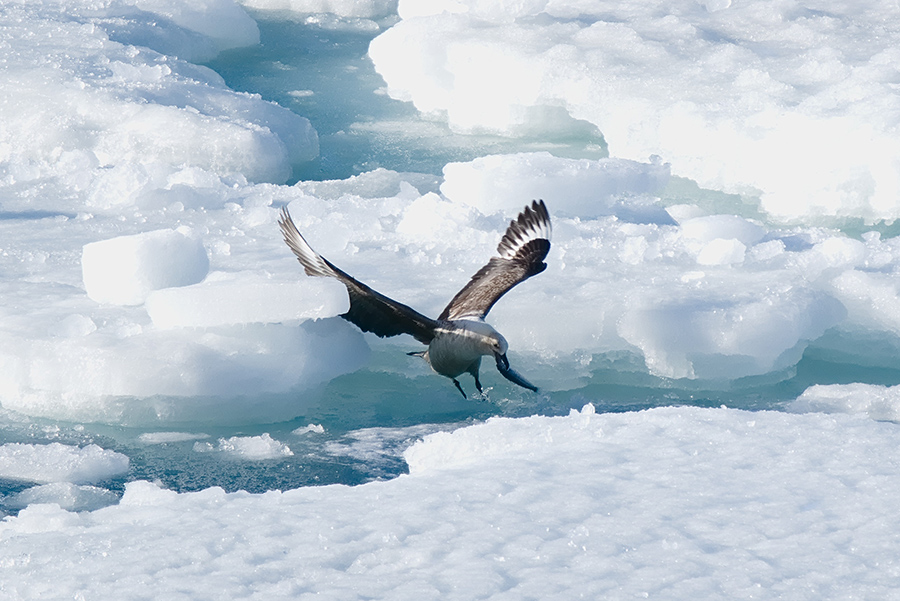Birding club documents frequent flyers around McMurdo StationBirdwatchers used their free time to catalog the birds calling Hut Point Peninsula their homePosted May 23, 2022
Staff at McMurdo Station established the Hut Point Bird Club this past austral summer, making observations they hope will help future birders learn more about the birds that inhabit the southern tip of Ross Island. When it comes to Antarctic wildlife, most people think of penguins, the iconic flightless birds that inhabit the continent and its coastal waters. But flying birds call Antarctica home too. General knowledge about the birds that inhabit Hut Point Peninsula, where McMurdo is located, has been scant and anecdotal in the past. So residents at McMurdo established the Hut Point Bird Club to better understand the bird life around Hut Point. The seven-member club had its inaugural meeting on November 20, 2021. The goal was to gather bird reports from multiple observers over the course of the next several months and give future birders at McMurdo a database with which to compare their own observations. The club documented bird sightings using eBird, an online database of bird observations used by scientists and amateur naturalists alike. The site, which is run by the Cornell Lab of Ornithology, provides users with real-time information about bird distribution and abundance all over the world. Users can also create checklists of birds to look for at various locations. Between 1973 and February 2021, there were only 32 eBird reports for Hut Point and McMurdo Station. But the Hut Point Bird Club made 70 eBird checklists between November 2021 and February 2022, and added 58 sightings to the club's database. They even documented a sighting of a Southern Fulmar, a species not seen in the area (according to eBird) before. In total, club members saw nine different bird species and created a pictorial bird guide for the McMurdo area. They made sure to keep a safe distance from all wildlife while making observations and upheld the rules outlined in the Antarctic Conservation Act. Among the species they observed were snow petrels, snow-white birds that are one of only three bird species seen at the geographic South Pole. Thanks to the club's efforts, migration patterns of snow petrels became clear. The all-white birds were first seen in flocks ranging in size from 4 and 26 individuals between November and mid-December. They were traveling over Observation Hill (a large hill adjacent to McMurdo), gaining altitude from the updraft there, and then flying southward over nearby White Island. Club members suspect the birds were going inland to set up nests and breed. After a month's lull, snow petrels were seen again as the sea ice broke up around McMurdo in mid-January. The birds took advantage of the ice edge around McMurdo as part of their foraging runs to feed chicks and nesting partners. The club also tracked movements of south polar skuas and their nesting habits. The large, brownish-gray predatory seabirds are infamous for their tenacity. They are known to aggressively snatch anything they think might be food and have even dive-bombed McMurdo residents carrying snacks outside. The club spotted eight skua nests: two on the edge of Observation Hill and the other six on Hut Point. Eight out of 12 chicks survived up to the middle of February, when observations stopped. The club isn't sure how many chicks fledged and migrated, but they estimate the total population of south polar skuas in the area to be in the mid-20s. The club caught sightings of all the bird species that had been historically reported around McMurdo - except for one. Only the Arctic tern, reported in 1973, was not seen. Curiously, two birds on the historical eBird list for McMurdo were seen not at the station proper but elsewhere: a gray petrel was seen off Scott Island in the Ross Sea and a chinstrap penguin was spotted at Cape Crozier on Ross Island. Station residents not part of the club also added their own bird sightings to the database. The club's aim was to help people see a little more of the Antarctic avian world hiding in plain sight. Alan Bacchiochi is the founder of the Hut Point Bird Club who worked as a sous chef in the McMurdo galley during the 2021-22 austral summer season. |
"News about the USAP, the Ice, and the People"



For USAP Participants |
For The Public |
For Researchers and EducatorsContact UsU.S. National Science FoundationOffice of Polar Programs Geosciences Directorate 2415 Eisenhower Avenue, Suite W7100 Alexandria, VA 22314 Sign up for the NSF Office of Polar Programs newsletter and events. Feedback Form |






